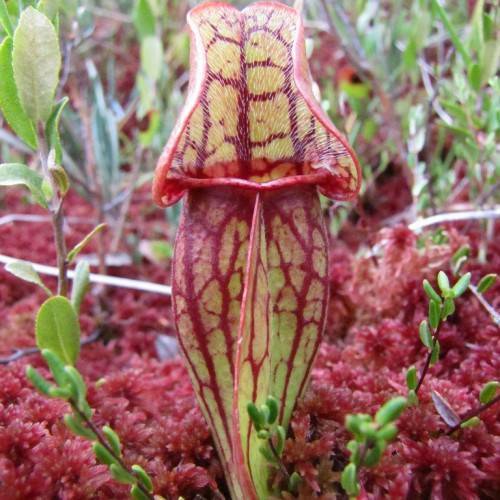
purple pitcher plant
Sarracenia purpurea subsp. venosa
Cycle:
Herbaceous Perennial
Watering:
Average
Hardiness Zone:
6 - 8
Flowers:
Flowers
Sun:
Full sun
Leaf:
Yes
Growth Rate:
Low
Maintenance:
High
Drought Tolerant:
Yes
Salt Tolerant:
Yes
watering
Purple pitcher plants should be watered with filtered water at least once a week. During the summer they should be watered more frequently, particularly if there is low humidity. The soil for pitcher plants should be kept wet but not overly saturated. Standing water should be avoided as this can cause root rot. Water should be added to the soil until it is moist, but not soggy. During winter, watering should be reduced, as the plant will go dormant.
sunlight
Purple pitcher plant (Sarracenia purpurea subsp. venosa) typically prefers full sun exposure, but it can also tolerate a few hours of partial shade. The best time for sunlight for this plant species is early morning and late afternoon sunlight, as the intense heat of summer can be damaging to the plant. It is important to ensure that the leaves of the purple pitcher plant are not exposed to direct sunlight for more than 5 hours a day, as this can cause sunburn and can have a negative effect on its growth.
pruning
When pruning a purple pitcher plant (Sarracenia purpurea subsp. venosa), the best time to do so is during spring or early summer. Prune any dead or dying growth, and any pitchers that are nearing the end of their season. You should also trim off any yellowing or browning leaves while the plant is in active growth. When pruning, remove affected sections of the plant and cut about 1 inch below the leaf node. Try not to leave any open wounds when pruning. When it comes to how much to prune, no more than a third of the plant should be removed in any 1 season. This will help to ensure the health of the purple pitcher plant and allow it to continue to thrive.
